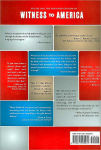"A mind opening work of intricate scholarship. If unicorns do exist I hope they never catch one. A great read that will grace my library."
A mind opening work of intricate scholarship. If unicorns do exist I hope they never catch one. A great read that will grace my library.
Whimsical, scholarly and continually absorbing.
In this lively survey, Lavers explores the roots and the evolution of Ctesias’ elusive beast... Lavers capably balances tales of individual enthusiasts with broader cultural considerations to show how the unicorn’s ‘connections with our myth-making reveal much about our engagement with the natural world.’
A vivid and highly readable trek following the trail of this elusive beast.
Whimsical, scholarly and continually absorbing.
The origin of the species and its later fame told in lore and legend is cleverly told.
Chris Lavers traces our fascination with the idea of a one-horned horse back 2,000 years in this scholarly history of unicorns … The history of the unicorn shows human beings at our imaginative best and our manipulative worst.
Lively, compelling, full of anecdote, wry scepticism and an honest humility about the things it is simply impossible for us to know for certain. . . . The book, like its subject, is not quite one thing nor another, but a fascinating hybrid.
Intriguing. …The history of a non-existent animal is, by definition, a series of diversions from actuality, and, by reversing that trajectory, Lavers’ book takes us to some fascinating places.
Lavers beautifully demonstrates what natural science and cultural history can show each other about the origins of enduring myths. Rigorous but never stodgy, precise without becoming arid, he has a lot of fun in these pages while pursuing one of the favorite beasts of mythology…Lavers keeps his intellectual detective story passionate and suspenseful. Illuminated by his erudition, symbol-rich scenes that have darkened to opacity over time turn translucent again. We see through museums' carved horns and faded tapestries and into the world that inspired them. Lavers shows us the parade of beasts wild and tame, familiar and exotic; the unforeseen side-effects of co-opting other culture's stories; the mistranslations and deliberate distortions; and most of all, in a world tormented by ignorance and violence and disease, the yearning for magic.
—The Washington Post
Starred Review.
In an inspired iteration of a cluttered genre-world-history-through-innocuous-topic-U.K. natural historian Lavers (Why Elephants Have Big Ears) rattles off a history of the mythical unicorn that "binds... the earth's natural history to our own." An object of fascination for at least the last 2,000 years, the unicorn was described in 398 B.C. by the Greek Ctesias as "wild asses as large as horses... white bodies, their heads dark red" with a horn that, when used as a drinking glass, protected men from epilepsy and poison. Ctesias became a source for Aristotle and Pliny, who shaped European beliefs for 1500 years. Wending its way into (and possibly out of) the Old Testament (Ctesias's ass was, "like the Hebrews' totemic reem, real strong, horned, indomitable and, crucially, not a cow."), unicorns are incorporated into Bible translations and the Physiologus bestiary (in its time, almost as big as the Bible), and one-horned creatures have even been found drawn on the walls of African caves. Laver's tongue-in-cheek delivery maintains its charm throughout while turning up a good bit of knowledge about natural history and how it's been artfully embellished by those recording it.
Copyright © Reed Business Information, a division of Reed Elsevier Inc. All rights reserved.
Lavers (Natural History/Univ. of Nottingham; Why Elephants Have Big Ears: Understanding Patterns of Life on Earth, 2001) ingeniously tracks the myth-making of the unicorn, a 2,500-year "windy road with many charming vistas, and many strange ones."The author seeks "to say a few things about the unicorn that have not been said before . . . to draw attention to the myth's natural history." He begins with Ctesias of Cnidus, a Greek physician who resided in Persia in the middle of the first millennium BCE. Ctesias gave us the first written description of the unicorn we have come to know. Building on Ctesias's account, Lavers looks at the Indian rhino, kiang, onager, yak, oryx and the chiru of Tibet ("How appropriate that the spiritual home of the unicorn is Shangri-La")-by most measures, creatures as magical as the unicorn-fashioning the chimera from the various fauna at his disposal. It is an enjoyable natural-history detective story, in which the unicorn becomes a symbol with weighty medical, political, erotic and religious associations. Lavers follows the creature through Gilgamesh, the Mahabharata and the Bible (including the work of Bishop Ambrose of Milan, in whose hands "a Jewish cow gradually metamorphosed into a symbol of Christ"), and examines its role in medieval tapestries and the Psalters. The author then moves on to the unicorn's secular career as a prestige gift and Romanticism's antidote to the confining rationalism of the Enlightenment. Lavers's enthusiasm is infectious and nicely tempered, even when he is off on a wild-goose chase, as in his discussion of Baron Friedrich von Wurmb's African misadventure in 1791 or the excitements bestirred by 19th-century explorers that werea poor cloak for colonial interests. Lavers makes an elegant, colorful guide to the unicorn's myth, marvel and the ties that have bound it to human progress.






